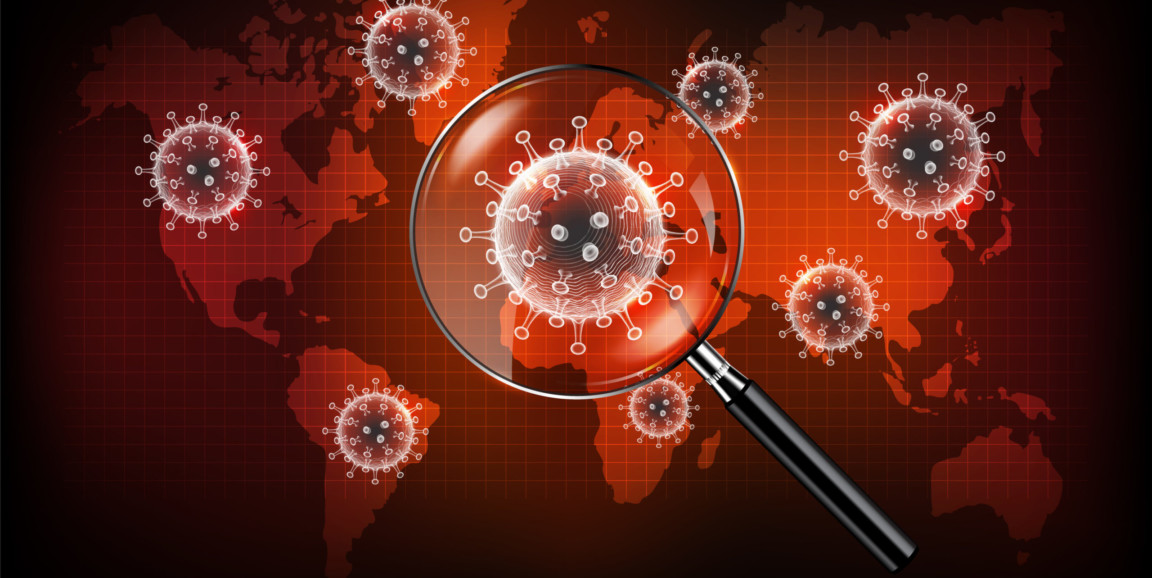A national COVID-19 screening and quarantine program developed for travelers coming into the U.S. had serious pitfalls, a newly published report showed.
Researchers and other experts tasked with recommending ways to strengthen the program, which was developed by the Centers for Disease Control and Prevention to prevent the spread of the disease, found that stations at 20 U.S. ports of entry and land-border crossings, where screenings took place, weren't up to snuff.
The experts found that outdated technology impeded efforts to quarantine and trace people who tested positive for COVID-19, hindered information sharing among officials and limited the ability to alert other travelers to potential exposure. The stations were also inadequately staffed, according to the report, which was conducted in 2021 and released by the National Academies of Sciences, Engineering and Medicine.
The report, developed at the request of Centers for Disease Control and Prevention officials, was created by a panel of independent experts, including Jason Wang, MD, PhD, a Stanford Medicine professor of pediatrics and of health policy, who examined the technological aspects of the network; and Michele Barry, MD, a professor of medicine and tropical diseases and the director of the Center for Innovation in Global Health, who reviewed disease control and response efforts.
In the first review since 2006 and the wake of the SARS outbreak, the panel examined the existing network of quarantine stations and recommended steps to better prepare the system for the next pandemic or public health emergency.
Rethinking pandemic preparedness
So how can we better fend off possible incoming infections?
The panel suggested that U.S. officials revamp its approach to quarantining at the border, and logging and tracking health data.
"The US needs a quarantine station system that can meet the infectious disease challenges we know are ahead of us," Georges C. Benjamin, executive director of the American Public Health Association and chair of the committee, said in a news release on the report on June 10.
"The CDC's quarantine division has to cover 300 ports of entry with only 20 quarantine stations and is in emergency crisis mode 24/7 with outbreaks like Ebola, Zika, SARS1 -- and now COVID-19 and monkeypox," said Barry who is a Stanford Health Policy affiliate. "They are chronically underfunded with high burnout rates and have no capacity to access surge funding without going to Congress -- an arduous process."
Her team recommended that Congress make additional emergency funding easily accessible during urgent times of crisis and create a reservist corps of experienced professionals who would be available to go to quarantine stations and complement the staff during emergencies.
Revamping data systems
Wang, an expert in medical technology and managing health data, provided guidance on how to improve the collection and sharing of data during an emergency. The COVID-19 pandemic revealed striking inadequacies in the technology infrastructure of the Division of Migration and Quarantine, which is overseen by the CDC. Wang emphasized that more efficient, effective gathering of health data from travelers, closer transmission tracing and subsequent alerting of exposure will be crucial.
"During the COVID-19 pandemic, we were faced with the challenge of a rapidly spreading virus," Wang said during a committee briefing of the report. "It is clear that we will need more efficient ways to gather data, share data across data systems and scale that data. New technologies offer opportunities for us to do that."
If the public health and data systems aren't upgraded before the next pandemic or public health emergency, we can expect the same results as this pandemic, he said: "We can and should do better."
And it's not infeasible, said Wang, who pointed to research showing how big data analytics, proactive testing and new technologies were successful in the fight against the coronavirus in Taiwan.
Wang also suggested that new technologies -- such as CRISPR-based diagnostic tests, wastewater detection of pathogens and Bluetooth-like technology for contact tracing -- could and should play a role in more efficient and effective infectious disease detection, monitoring and prevention.
This story is adapted from its original version.
Photo by chakisatelier






